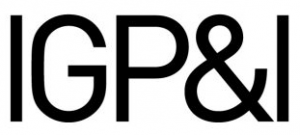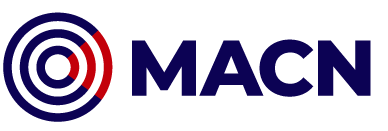It’s that time of the year again! Vessels calling at ports in Eastern Asia and Russia Far East between May and October should be inspected and obtain a certification that they are free from Flighted Spongy Moth Complex prior to departure. This will reduce the likelihood that they will face regulatory action when arriving in a country where this destructive forest pest is not native.

Managing Flighted Spongy Moth Complex risks
Published 06 March 2024
The risks
The Flighted Spongy Moth Complex (FSMC), including Lymantria dispar asiatica, Lymantria dispar japonica, Lymantria albescens, Lymantria umbrosa, Lymantria postalba, is a destructive forest pest known to spread via ocean-going vessels in international trade. At the time of writing, the pest has established populations only in countries in the Far East, such as Russia, China, Korea, and Japan.
The FSMC flight season, when females lay their eggs and there is a risk of egg mass depositions onboard vessels, extends from May to October. However, the specified risk period (SPR) for each port varies depending on the port’s exact location and its climatic conditions. Because the moth’s egg masses can tolerate extremes in temperature and moisture, larvae can hatch months, if not years, after an egg mass was attached to a vessel. If this occurs when the vessel is in a country where the FSMC is not native, but the climatic conditions can sustain FSMC lifecycles, it has the potential to seriously affect the country’s agricultural and forest resources. As a result, FSMC exclusion efforts are considered a priority by many local port authorities.
Regulating countries
Countries where the FSMC is not native and that are currently known to regulate and inspect arriving vessels for FSMC are the United States (US), Canada, Chile, Argentina, Australia and New Zealand. However, authorities in other countries may also be alert to the risk of this invasive and destructive pest.
Although, many of the regulating countries claim to follow the most recent recommendations provided by the North American Plant Protection Organization (NAPPO), there is no uniform internationally agreed regulation on how to manage FSMC risks. All the regulating countries require arriving vessels to declare whether they have traded to regulated port in the Far East during its SPR. Most of them also require such vessels to be inspected and certified free of FSMC by a recognized certification body. However, there are still differences in requirements and port-of-entry processes between the regulating countries due to sovereign regulations and policies. Even their definitions of regulated areas and SPRs are not entirely identical!
To help ship operators and their masters to stay compliant in terms of managing FSMC risks, we have thus collated and tabulated the key requirements of each regulating country.
Our summary of FSMC regulations is available here, the following should be noted:
Canada and the US work together to manage FSMC risks at origin and both countries have aligned their policies on FSMC regulated areas and SPRs with the most recent recommendations by NAPPO. Vessels that have called on a port in a regulated area during the SPR over the last 24 months must arrive in North American ports free of FSMC and should have obtained pre-departure certification. In addition to obtaining FSMC certification, extra vigilance in conducting self-inspection is requested to prevent a high number of vessels arriving with egg masses.
Chile’s policy on FSMC regulated areas and SPRs is aligned with that of NAPPO, and hence Canada and the US. The same goes for the pre-departure certification requirements, however, unlike Canada and the US, Chile does not provide its own list of recognized overseas inspection and certification bodies.
Argentina’s policy on FSMC regulated areas and SPRs largely mirrors that of NAPPO, and hence Canada, the US and Chile. However, Argentina additionally defines its regulated ports in the Far East as "all ports located between 20°and 60° N latitude”. Unlike the three other countries, Argentina defines Akita and Yamagata Prefectures as part of Western Japan, which has a longer SPR than Northern Japan. Like Chile, Argentina does not provide its own list of recognized overseas inspection and certification bodies but have the same pre-departure certification requirements.
New Zealand’s policy on FSMC regulated areas and SPRs is aligned with that of NAPPO, and hence Canada, the US, and Chile. However, unlike these countries, only vessels that in the past 12 months were in one of the regulated ports during the SPR are required to present a valid pre-departure certificate.
Australia targets vessels that have visited a port in Russia Far East between 40ºN, 60ºN and west of 147ºE, anytime between 1 July and 30 September in the previous two calendar years and have no certification requirements like the other regulating countries. Vessels classified as high risk of FSMC will be assessed by the Australian authorities to determine the need for FSMC inspection on arrival and will be notified if a targeted FSMC inspection is required as part of their first port arrival formalities.
Port entry requirements
Vessels entering a regulating country may be subject to inspection at any time of the year to verify that it is free from FSMC. However, as the potential for larvae to hatch from egg masses attached to a vessel in port, and spread, depends on the local climatic conditions at a specific port, each of the regulating countries may specify certain periods of the year with heightened surveillance and more systematic inspection for FSMC. We recommend approaching the vessel’s local agent well in advance of arrival to verify the port’s FSMC requirements in force at a given time.
If FSMC egg masses are detected during port inspection, the requirements imposed on the vessel depend on each country’s regulation, taking into account climatic conditions at the time of entry as well as the degree of FSMC infestation, and the stage of development of the egg masses detected.
In some cases, the vessel may be allowed to berth before being cleaned and treated with insecticide spraying whilst alongside. In other cases, if the vessel’s itinerary indicates that the presence of FSMC life stages are possible and large amounts of egg masses that appear fresh and viable for hatching are detected, the risk may be considered too high and the vessel can be ordered to leave the country’s territorial waters immediately.
Reduce your vessel’s risk of FSMC infestation
The implementation of proper routines for carrying out systematic self-inspections onboard the vessel while en route is a good way to avoid delays and re-routing during subsequent port calls.
Various authorities have published guides for conducting vessel self-inspections which are available to download. Examples are Canada’s Inspect Before Entry and New Zealand’s Don't bring hitchhikers to New Zealand on your commercial vessel. The guides provide helpful instructions to vessel crews on what the egg masses look like, where they might be found onboard the vessels, and how the eggs should be removed and destroyed. In summary, the crew should:
Carry out a thorough visual inspection of all accessible areas of the vessel’s superstructure, decks, holds, cargo and cargo gear. Use binoculars to inspect unreachable areas. Egg masses are often deposited in sheltered locations, in crevices or cavities, under tarps, behind doors, around light fixtures, and underneath the hold rims. As female FSMCs are attracted to light, female moths could lay their egg masses on surfaces of the vessel exposed to night lights.
Scrape off any egg masses found and destroy them in alcohol, boiling water or by incineration. Do not paint over egg masses or drop egg masses into the sea as this will not kill the eggs or larvae.
Record details of the inspections undertaken and the removal and disposal of FSMC egg masses in the vessel’s deck log-book.




